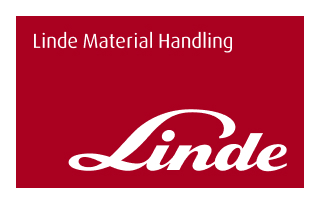Electric forklifts are the workhorses of many Australian warehouses and logistics operations. But like any machine, their performance depends on the condition of their components — especially the forklift battery. Knowing when it’s time to buy a forklift battery can save you from costly downtime, and keep your operations running smoothly.
Why the Health of Your Forklift Battery Matters
The forklift battery is more than just a power source — it’s the heart of your electric forklift. A healthy battery ensures:
- Consistent performance: So your forklift maintains the power needed to lift, move, and shift loads.
- Reduced downtime: Helping to avoid unexpected stops or battery failures that delay work.
- Lower operational costs: Efficient batteries reduce electricity use and wear on forklift components.
- Improved safety: Batteries in poor condition can overheat, leak acid, or fail suddenly — putting operators at risk.
Simply put, a well-maintained battery helps your fleet run safely, reliably, and cost-effectively.
Key Signs It’s Time to Replace Your Forklift Battery
Not sure if your forklift battery is past its prime? Watch out for these tell-tale signs:
- Reduced run time or more frequent need for recharging: If your battery doesn’t last through a shift, it may no longer hold a full charge.
- Visible damage such as cracks or leaks: These can be dangerous and are clear indicators the battery needs replacing.
- Overheating or excessive charging time: Older batteries may generate excess heat or take much longer to charge.
- Corrosion or bulging on the battery casing: This indicates chemical degradation inside the battery.
- Battery age: Lead-acid batteries generally last 1,000–1,500 charge cycles; lithium-ION batteries can last 3,000–5,000 cycles.
Let’s take a closer look at some of these critical issues.
Battery Power Loss & Performance Issues
When a battery begins to fail, power output drops. You’ll notice your forklift slows down or struggles to complete a full shift. This is especially common with older lead-acid batteries.
Why it matters:
A weak battery can impact the hydraulic system, steering, and lifting capacity of your forklift, slowing down your operations.
Lithium-ION advantage:
Lithium-ION forklift batteries offer:
- Longer lifespans.
- Faster charging.
- Consistent power delivery.
They are a smart investment for businesses seeking performance and long-term cost savings.
Corrosion, Leaks, and Visible Damage
Corrosion on battery terminals, acid leaks, or cracks in the battery casing are red flags. These issues can cause:
- Equipment damage.
- Safety hazards.
- Electrical inefficiencies.
Don’t ignore these warning signs — they often indicate that a forklift battery replacement is urgently needed.
Battery Age and Lifespan
Batteries don’t last forever. Understanding their expected lifespan helps you plan for timely replacements:
- Lead-acid batteries: 1,000–1,500 charge cycles (approx. 3–5 years with moderate usage).
- Lithium-ION batteries: 3,000–5,000 charge cycles (often 7–10 years with moderate usage).
Considering an upgrade?
Lithium-ION batteries are ideal for high-use environments. They require less maintenance and deliver better long-term value.
Should You Replace or Recondition Your Forklift Battery?
Depending on the battery’s condition, you may wonder whether to replace it entirely or recondition it. Here's what to consider:
Reconditioning
- Suitable for: Lead-acid batteries.
- Benefits: Cost-effective if battery is only moderately degraded.
- Limitations: May not restore full capacity; not a long-term fix.
Replacement
- Recommended for: Severely damaged or old batteries; lithium-ION batteries near end-of-life (with most lithium-ion batteries, an on-board computer will tell you how far along the battery life is).
- Benefits: Full performance restoration; longer operational life.
- Limitations: Higher upfront cost.
If you're unsure, a Linde expert can help you evaluate your options based on performance, usage, and cost.
How to Extend the Life of Your Forklift Battery
With the right care, you can maximise the life and performance of your forklift batteries. Here are a few best practices:
- Regular cleaning and inspection: Keep terminals and battery compartments clean and free from corrosion.
- Proper charging practices: Avoid overcharging or interrupting charge cycles.
- Use the right charger: Match chargers to the battery type — lithium-ION or lead-acid.
- Consistent use: Batteries perform best when used regularly.
- Proper storage: Store batteries in cool, dry conditions when not in use.
Preventative maintenance goes a long way in delaying the need for forklift battery replacement.
Why Buy a Forklift Battery from Linde Material Handling?
Choosing the right forklift battery supplier is just as important as choosing the right battery. Here’s why Linde is trusted across Australia:
- Premium quality: Linde batteries are engineered for long life, performance, and reliability.
-
Expert support: From selection to installation, our team ensures your battery solution matches your operational needs.
- Ongoing service: We offer forklift battery replacement services and ongoing support to keep your fleet running at peak efficiency.
- Innovative technology: Our electric forklifts and batteries are designed for durability, energy efficiency, and minimal downtime.
Buy a forklift battery from Linde and experience the difference in quality, service, and performance.
Need help choosing the right battery for your fleet? Contact Linde Material Handling Australia for expert advice and support today.
CONTACT US

